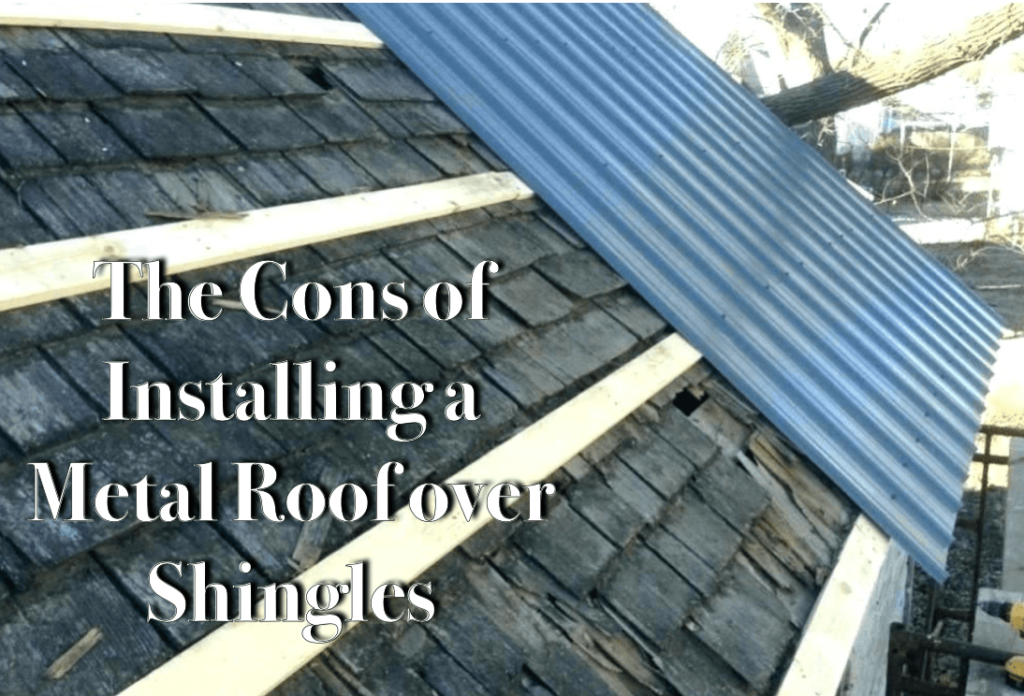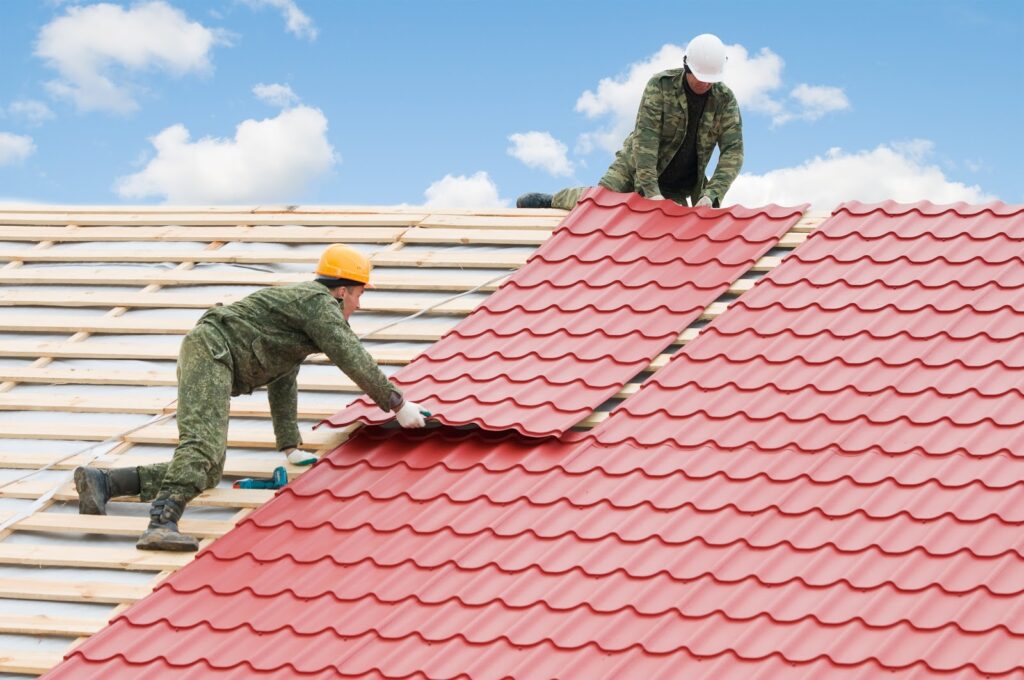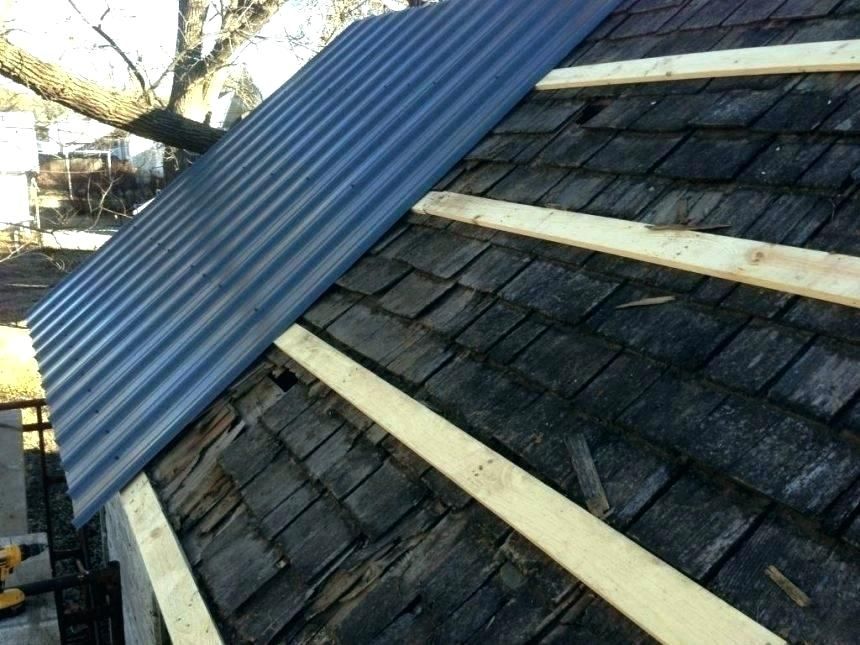Imagine being able to install a metal roof seamlessly, without the hassle and expense of removing your existing shingles. Well, it turns out, you can! In this article, we will explore the possibility of putting on a metal roof without removing shingles and delve into the benefits and considerations of this innovative approach. So, if you’re considering a metal roof makeover, keep reading to discover this game-changing technique that could save you time, money, and headaches!

Preparing the Roof
Before installing a metal roof over shingles, it is crucial to assess the condition of the existing shingles. Look for any signs of damage such as cracks, curling, or missing shingles. If there are extensive issues with the shingles, it is advisable to replace them before proceeding with the metal roof installation. Remember, the overall condition of the roof will directly impact the longevity and effectiveness of the metal roof.
Another important consideration when preparing the roof is ensuring proper ventilation. Adequate ventilation is essential to prevent moisture buildup and to regulate the temperature inside the attic space. Make sure there are sufficient vents and airflow to prevent any potential issues down the line.
Additionally, it is crucial to check the roofing structure before installing a metal roof over shingles. Ensure that the roof is structurally sound and capable of supporting the additional weight of the metal roof. If there are any concerns or doubts about the structural integrity of the roof, it is recommended to consult with a professional contractor or engineer before proceeding.
Choosing the Right Metal Roof
When selecting a metal roof, there are several factors to consider. First, consider the weight of the metal roof. Ensure that the existing roof structure can handle the additional load. If not, reinforcement may be necessary.
Next, choose the right metal material for your roof. There are various options available, such as steel, aluminum, and copper. Each metal has its own advantages and disadvantages, so it is essential to research and select the one that best suits your needs.
Once you have chosen the metal material, consider the style of the metal roofing. There are different profiles and designs available, including standing seam, corrugated panels, and metal shingles. Take into account the architectural style of your home and choose a style that complements it.
Tools and Materials Required
To properly install a metal roof over shingles, you will need a variety of tools and materials. First and foremost, ensure you have the necessary safety equipment such as gloves, safety glasses, and a harness system if working on a steep roof.
You will also need roofing materials such as underlayment, which acts as a secondary barrier against moisture. Fasteners and adhesives are necessary to secure the metal roof panels in place, while roofing tools like a nail gun, snips, and a metal roof cutter will make the installation process easier.
Installation Process
The installation process involves several steps to ensure a successful metal roof installation over shingles.
First, remove any loose or damaged shingles to create a smooth and even surface. This step is crucial to prevent any bumps or irregularities that may affect the metal roof’s appearance and performance.
Next, install an underlayment over the shingles. This additional layer provides extra protection against moisture and helps create a flat surface for the metal roof.
Adding battens is the next step. These are strips of wood or metal that create a raised surface and allow for air circulation between the shingles and the metal roof. Battens also provide a secure base for attaching the metal roof panels.
Once the battens are in place, it’s time to fit the metal roof panels. Start at the bottom and work your way up, overlapping each panel to ensure a watertight seal. Secure the panels with fasteners as recommended by the manufacturer.
After the metal roof panels are installed, it is crucial to trim and seal the edges to prevent any water infiltration. Pay close attention to areas where the metal panels meet protrusions such as chimneys or vents.

Considerations and Challenges
Installing a metal roof over shingles comes with a few considerations and challenges that should be addressed before proceeding.
One consideration is the compatibility with the existing shingle roof. Ensure that the metal roof can be installed without compromising the integrity of the shingles. Consult with a professional if necessary to determine if this is a feasible option for your specific roofing system.
Another consideration is the potential increase in roof height. Metal roofs are generally thicker than shingle roofs, so the overall height of the roof may increase. This may impact the aesthetics of your home or require adjustments to accessories like gutters or downspouts.
Metal roofs can also influence roof ventilation. Proper airflow is essential for maintaining a healthy roof system, so it is crucial to ensure that the metal roof installation does not impede or restrict ventilation pathways. Consult with a professional to ensure proper ventilation is maintained.
Changes to the roof design and aesthetics should also be taken into account. Metal roofs come in limited styles and colors compared to shingles, so you may need to consider if the available options align with your desired look and curb appeal.
Lastly, installing a metal roof over shingles may result in higher initial costs compared to shingle replacement alone. While metal roofs offer long-term benefits, it is important to consider the potential upfront investment required for installation.
Advantages of Installing a Metal Roof over Shingles
There are several advantages to installing a metal roof over shingles.
One significant advantage is the enhanced durability and longevity of metal roofs. Metal is resistant to many common issues that plague shingle roofs, such as rotting, cracking, and curling. Metal roofs can withstand extreme weather conditions, making them highly durable and long-lasting.
Metal roofs also offer improved energy efficiency. They reflect more sunlight, reducing heat absorption and keeping the interior of the house cooler. This can lead to lower energy bills and a more comfortable living environment.
Fire resistance is another advantage of metal roofs. Unlike shingles, metal does not ignite or contribute to the spread of a fire, providing an extra layer of protection for your home.
Maintenance of a metal roof is relatively simple. They require less frequent repairs and replacements compared to shingles. Regular inspections and gutter cleaning are usually sufficient to keep a metal roof in top condition.
Installing a metal roof over shingles can also increase the value of your home. Metal roofs are a desirable feature for potential buyers due to their durability, energy efficiency, and aesthetic appeal.

Disadvantages of Installing a Metal Roof over Shingles
While there are many advantages to installing a metal roof over shingles, there are also a few disadvantages to consider.
One potential disadvantage is the added weight on the roof. Metal roofs are generally heavier than shingles, so it is important to ensure that the roof structure can handle the additional load. Reinforcement may be necessary, which can increase the overall cost of the installation.
Trapped moisture is another potential issue with metal roofs over shingles. If proper ventilation is not maintained, condensation can accumulate between the metal roof and shingles, leading to potential moisture damage. It is crucial to address ventilation concerns before installation.
Metal roofs can also be noisier than shingle roofs, especially in heavy rain or hailstorms. However, modern installation techniques and insulation materials can help reduce the noise significantly.
Limited styles and colors are another disadvantage of metal roofs. While there is a wide range of options available, it may be challenging to find the exact style and color that matches your preferred aesthetic. It is important to consider this before choosing a metal roof.
Lastly, the initial cost of installing a metal roof over shingles is typically higher than replacing shingles alone. The materials and labor required for installation contribute to higher upfront costs. However, the long-term benefits and durability of metal roofs often outweigh the initial investment.
Safety Precautions
When undertaking any roofing project, it is crucial to prioritize safety. Here are some essential safety precautions to keep in mind:
-
Use protective gear such as gloves, safety glasses, and a harness system if working on a steep roof. These items will help protect you from potential injuries.
-
Ensure proper ladder safety. Place the ladder on a stable and level surface, and secure it to prevent it from slipping or tipping over. Always maintain three points of contact while climbing the ladder.
-
Be cautious of power lines. Metal roofs conduct electricity, so it is important to be aware of any nearby power lines and take appropriate precautions to prevent accidents.
By following these safety precautions, you can minimize the risk of accidents and injuries during the installation process.

Hiring a Professional vs. DIY
Deciding whether to hire a professional or undertake the installation as a do-it-yourself (DIY) project is an important consideration.
Hiring a professional roofing contractor has several benefits. They have the expertise and experience to ensure a proper installation, reducing the risk of errors and future issues. Professional installers are also familiar with local building codes and regulations, ensuring compliance during the installation process.
Cost considerations are essential when deciding between hiring a professional or taking on the project yourself. While hiring a professional may incur additional costs, it can save you time, ensure quality workmanship, and potentially prevent costly mistakes. DIY installations are generally cheaper, but require a higher level of skill and may lack the same warranty and guarantees offered by professionals.
If you have the necessary skills and experience, and are willing to dedicate the time and effort required for a successful installation, then a DIY project may be a viable option. However, if you are unsure or lack the necessary skills, it is advisable to hire a professional to ensure a safe and effective installation.
Conclusion
In conclusion, installing a metal roof over shingles can be a viable option under the right circumstances. However, it is crucial to thoroughly assess the condition of the shingles, ensure proper ventilation, and check the roofing structure before proceeding. Choose the right metal material and style that suits your home’s aesthetic and consider the advantages and disadvantages that come with metal roofs.
Remember to follow the recommended installation process, taking the necessary safety precautions and addressing any considerations or challenges that may arise. Finally, weigh the decision of hiring a professional versus undertaking the installation as a DIY project based on your skills, available time, and budget. By carefully considering all these factors, you can make an informed decision and successfully install a metal roof over shingles.
